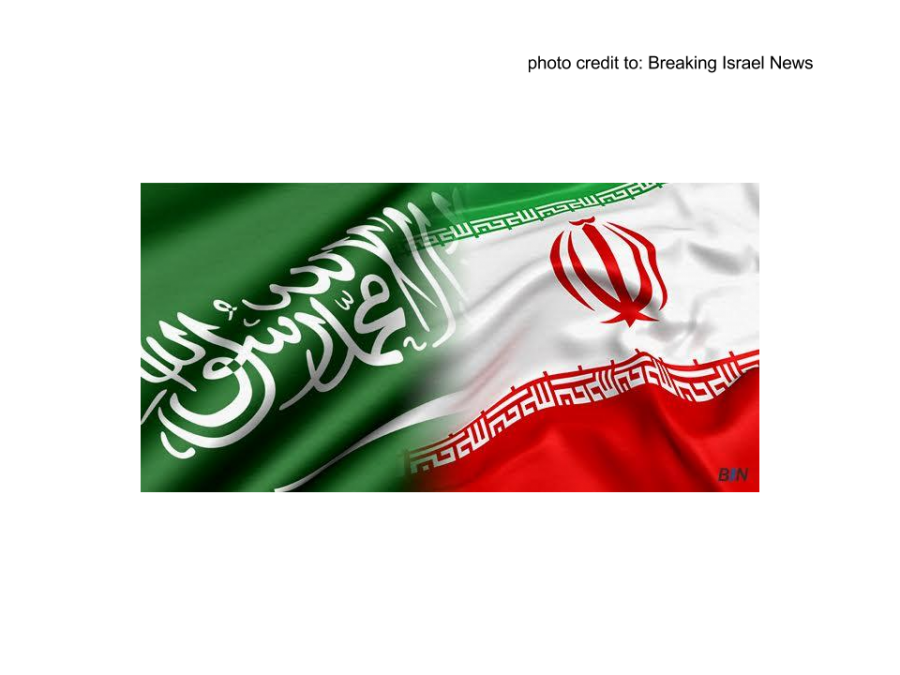The Saudi Arabia-Iran Divide
February 4, 2016
The Saudi Arabian-Iran relationship has been hanging on by a thread, and managing that just barely. Just this past Sunday, January 4th 2016, the new year was kicked off with Saudi Arabia announcing an end to diplomatic ties with Iran.
This Sunni-dominant state reached its boiling point with its great Shia enemy as a Shia cleric, Nimr al-Nimr, was executed for stirring up anti- government protests within Saudi Arabia. The Saudi Kingdom labeled this as an “act of terror” to justify his execution, along with 46 other Shias. (Asa Fitch, The Wall Street Journal)
The Iranian people refused to let these executions go unpunished. Iran protesters, angered over Saudi’s actions, stormed their embassy in Teheran. According to Iranian officials, no Saudi Arabian diplomats were present and nobody was harmed in the attack. Regardless, this was the last straw for Saudi Arabia: forty-eight hours were put on the clock for all Iranian diplomats to leave the country. Both sides continue to fire back and forth at each other verbally, but it is unclear as to whether there will be an outburst of direct armed conflict.
Join the Bandwagon
The Saudi- Iran diplomatic split wasted no time pouring over into neighboring countries. In less than three days, the United Arab Emirates (UAE), Bahrain, and Sudan all reconsidered their relationship with the leading Shia regional power.
On Monday, Bahrain declared it would be “severing ties” with Iran as a result of the chaos in Tehran. The UAE took a less drastic action, choosing to “downgrade” its relationship and cutting its number of diplomats present in the country (according to WAM state news agency). Off to the West in Africa, Sudan (a Sunni majority nation) has kicked out all Iranian diplomats and closed their mission in the country. Kuwait has joined in these moves towards separation, just recently following in the same footsteps as these other nations. (CNN)
Important to note is that all of the nations choosing to take similar action as the Saudis hold a Sunni majority, reminding us of the continued relevance of the great Sunni-Shia split centuries ago. Today, this internal religious divide of Islam remains a roadblock for solutions towards peace in the Middle East.
The buildup and the breaking point
CNN’s Catherine E. Shoichet and Mariano Castillo mention that the inability for these countries to see eye to eye is nothing new. In recent decades the two have been supporting opposing factions in a variety of proxy wars.
In Syria, Iran supports the Assad regime struggling to maintain control of the crumbling country, while Saudi Arabia has displayed its own backing of various rebel organizations seeking to overthrow the regime.
In Yemen, Iran backs the Houthi rebels, a Shia minority group in the country. Saudi Arabia has led the fight against these rebels by supporting the Yemeni government and its leader, President Hadi.
The list of proxy wars and issues where these two nations stand divided goes on and on. This reminds us that the recent change toward a “cold” war-style relationship between the countries did not just suddenly happen: it has been a buildup of tensions. It is best explained by Martin Reardon, senior Vice President with The Soufan Group, saying “Saudi Arabia and Iran are engaged in their own decades-long strategic rivalry for power and influence in the Middle East… It is built mostly along sectarian and ideological lines.”(AlJazeera)
What is to come for the Sunni-Shia rivals?
The two states have essentially moved from indirect confrontation via proxy wars to direct confrontation, paving a path for any actions, from sanctions to military action. Unnerving many is the increasing polarization between Sunnis and Shias. The fact that four nations have already degraded their relationship with Iran, just as the leading Sunni power Saudi Arabia has, tells us that any peace in the middle east is growing farther and farther out of our reach.




